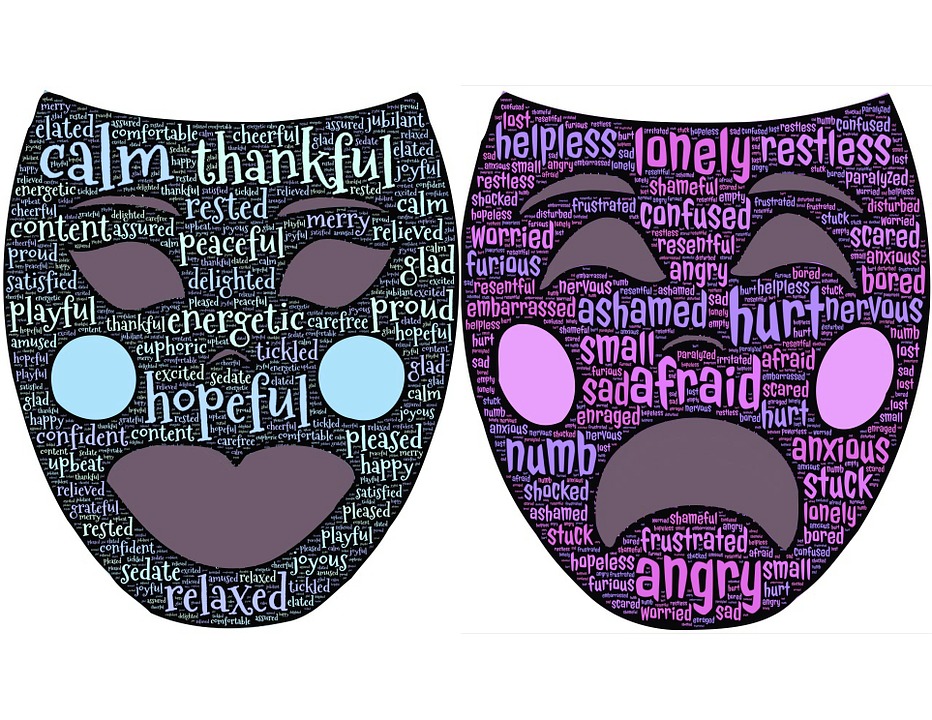The toolbox continues to expand with information from basics to best practice. You are welcome to borrow the ideas but please mention the source.
Click the “TOOLBOX” tab above to access general information
EPIC-DEMIC ASSESSMENT (Hopefully a Temporary Addition)
PART 1: RETURNING TO SCHOOL
Knowing What Student’s Know
Understanding Student’s Experiences and Emotions
Restoring Relationships and Routines

When the turning point comes and life begins to return to a new normal, how will you know what your students learned during their home-schooling experiences? Many parents tried to juggle home teaching expectations while working remotely. Teachers, with children of their own, struggled under the dual expectations of developing learning plans for their own classes as well as fulfilling the learning plans that their children’s teachers sent home.
Easing back to normalcy will take time: To identify student’s variations in learning and prepare them for a return to the routines of school, while catching-up on lingering gaps. Politicians may promise a return to normal, but most health and human service professionals see a new asymmetry.
Throughout schools, classrooms, and homes, it will take time to adjust. Educationally, the possibility of skipping a year of standardized testing will be bewildering in terms of where and how to begin the next school term. Picking up where you left off is impractical because some children have been moving ahead while others have remained stagnant. Additionally, there is the question of which standards are most vital to achieve, while new grade-level ones await?
HERE ARE SOME COMMON THREADS IN THE EMERGING GUIDANCE FOR RESPONDING TO THESE CHALLENGES.
Be realistic about all aspects of teaching and learning: Cognitive development as well as social-emotional. It’s been a stressful time for everyone. Each student has had a different experience ranging from parents who have the skills and time to teach at home, to others who experienced abundant screen time or inconsistent caregiving.
Start with a clean slate: It may not be feasible to pick up where you left off last term, but it is possible to construct a foundation for moving ahead with learning. Recognize student’s collective, communal, and shared learning experiences as well as what was unique and personal for each. Rahel may have conscientiously followed the online lessons while Reagan’s family spent weekends learning together, perhaps building a greenhouse or taking virtual tours to other planets.
Take it step by step: Rather than rushing forward, take time to rebuild relationships with your students, listen to their experiences, learn from each other, and reassure them that all types of learning can be valuable. Then, begin a step by step process to recognize what was learned and what gaps still linger. Ask them about the best ways for them to show what they learned. Let them fill their own virtual or paper “slate” to display, diagram, and illustrate emotional and mental states
Establish shared routines: Ask students what they remember of classroom expectations and practices, ways to keep their workspace organized, how to handle disagreements, or how to respond when someone is sad. Add some fun: Develop a shared dance move when changing learning activities and stations, or at the end of group work, have students exchange “virtual gifts with each other such as expressing appreciation for ___. Develop unique, non-contact, morning greetings.
Build a sense of connectedness and belonging: Create a chart where each student can identify something they like to do, are good at, or learned at home: i.e., cleaning their room, solving problems, art, karate, and more.
Talk about feelings: Acknowledge that some people experienced powerful feelings during this time, while others lapsed into a lackadaisical or discouraged mindset. Make a chart by asking students to list people’s feelings, then collectively generate words with an opposite meaning. For example, bored becomes interested, stress and worry becomes relaxed and calm, distracted becomes focused, and problems become solutions. Emphasize the importance of acknowledging understanding and responding to our feelings. https://www.weareteachers.com/emotional-regulation/

Incorporate a dash of fun to ease normal and expected nervousness. Also, consider the needs of students who may be more anxious. Warm-up everyone with get-acquainted activities such as: “If I could have been anywhere else during this time, it would have been…….” Or roses (enjoyable things that happened) and thorns (prickly things I experienced).
Consider ways to check recall of previous learning such as word association using prior vocabulary, concept maps, small group brainstorming, draw-it, three-corners where students post “I remember, I forgot, I need help with…” Be prepared to introduce new learning in ways that make connections to prior learning, such as an ABC vocabulary or a KWL. https://wabisabilearning.com/blogs/assessment/15-assessment-activities-fast-formative
Keep parents in the loop: Even before students return to school, make sure everyone is reducing their screen-time and re-engaging in active and dynamic learning. Keep everyone connected with classroom news updates, postings of classroom activities, student-written notes home. https://raisingchildren.net.au/for-professionals/working-with-parents/communicating-with-parents/communication-with-parents
Alone we can do so little; Together we can accomplish so much.” Helen Keller
Part 2: ADJUSTING TO A NEW NORMAL
As the kerfuffle abates, confusion subsides, and the dust begins to settle in classrooms across the globe, educators are setting their sights on helping students get back on course with their learning.
If everyone were restarting on a level playing field, it would be easy to assess mastery of expected learning outcomes during the months of being away from the classroom. Unfortunately, schools are not reopening under these ideal conditions: Some students have stayed on track towards meeting end of the year requirements. Others have lagged due to no fault of their own.
Blaming others is not a feasible solution, nor is telling learners and their families to pull themselves up by their proverbial bootstraps. Most boots no longer have those provisions and some students may not be as resourceful and self-starting as anticipated. Some schools and learners never had boots, others have outgrown them, and some have faced obstacles in using them on uneven learning paths.
The magnitude of the effects of school closings combined with varied student experiences at home, is yet to be known. Without a consistent road map, schools, teachers, and learners will be forging new and alternative pathways to success in meeting grade level and subject area requirements.
Here are four guideposts to keep learning and assessment on track when returning to schools and classrooms.
1. RETURN TO ROUTINES
Time-tested, predictable routines are a good starting point. Fine-tune previously successful practices for getting students’ attention, engaging them in learning, and monitoring progress. Perhaps ask students to recall prior classroom expectations as well as suggest feasible modifications. It is best to avoid substantial changes such as regrouping or shuffling classes, introducing new curriculum, or restructuring schedules.
2. TRY SOMETHING DIFFERENT
While keeping an eye on long-term goals and measures, use this time to integrate low-risk formative strategies in the classroom. Instead of a whole class review of vocabulary, have small teams of students select vocabulary words from a bowl and decide together the best way to review the definition and usage. They could choose to illustrate or acting it out or develop a mixed list of synonyms and antonyms for their classmates to sort into the correct category.
3. EXPAND, AUGMENT and AMPLIFY ASSESSMENT PRACTICES
In addition to traditional teacher-guided routines and measures, consider asking students to demonstrate what they learned. They can prepare an empty outline for the class. As they explain their topic, others insert the correct word into their own outline. For example, when the outline says: The last major battle of the Civil War was at _________ Courthouse where General ______surrendered to General ___________. To incorporate higher levels of thinking, ask students to explain the significance or two aftereffects of this battle. Rather than having students provide one correct answer, ask them to elaborate on their thinking or explain a concept to a Martian.

4. EVEN BETTER THAN TESTING
It is possible to study for a test, select the right answer, and yet not be able to explain or demonstrate understanding. Instead, consider open-ended questions that require higher levels of thinking or evidence of learning. Students could write questions for others to answer, use the content vocabulary to write a poem or rap, or create media and visual images such as infographics. Note: it is best to accompany these less conventional methods with rubrics and other types of rating scales.
PART 3. IDENTIFYING and RESPONDING TO LINGERING LEARNING GAPS
Widespread school closures can result in unexpected hurdles when students have learned remotely

The word pandemic brings powerful images and evokes strong feelings including, fear and loss as well as hope and even an occasional guffaw . Hollywood has done its part with “Outbreak” and “Contagion,” as well as “Idiocracy” and “Sharknado.”
In addition to interruptions in learning, there are social and emotional ramifications of school closings including isolation, stress, economic challenges, limited access to technology, and inconsistencies in home-schooling. Even when students don’t face these dilemmas, it can be perplexing to figure out what each child knows and complicated to accurately measure progress, identify lingering gaps, and determine appropriate interventions.
Many learners become frustrated when they find themselves in a “learning pit,” as James Nottingham describes it. (https://www.challenginglearning.com/learning-pit/) Like teeth that weaken from too many sweets, brain synapses can be altered from too little cognitive stimulation or too much emotional overload.
One of the resources I frequently turn to is “Knowing What Students Know” from the National Research Council. It informs and advises on numerous assessment topics from the neuroscience of learning to effective use of data. A fundamental take-away is that there is no single “best” practice in assessment. Instead, it is necessary to rely on a spectrum of assessments from factual recall, to analysis of evidence, and demonstrations of learning.
Accurate assessment is grounded in these ABCs:
A. Alignment of assessment with standards, teaching, learning, and local assessments.
B. Balanced, practical, and purposeful, assessment strategies for substantiating student learning.
C. Coherent, meaningful, and useable responses to students’ evidence of learning.
Closing lingering learning gaps relies on these four practices for deciphering and diminishing them:
1. Determine the size of the gap. Lagging by one lesson requires different remediation than missing months of learning. Focus on the diagnostic aspects rather than solely summative outcomes.
2. Rely on multimodal summaries and reviews (i.e., reading, doing, observing, listening) that incorporate opportunities for all students to catch-up. Another option is to give students a choice of the best ways for them to learn and display their learning.
3. Transfer ownership for closing gaps to students, perhaps using a standards-based annotated checklist where students can rate their current level of achievement, describe what they do not understand, and choose strategies and resources to help them move forward.
4. Understand the cause of the gap. Content knowledge can be strengthened with a whole class review or individualized resources, reflection, and analysis. Encourage those who have higher levels of mastery to help peers. When learners face overwhelming social and emotional challenges, do not hesitate to seek professional support for them and you
REFLECTION
1. What elements of assessment have you mastered?
How can you share (i.e. explain, demonstrate) your experience and expertise with others?
2. What skills and knowledge are most valuable to you?
Which ones do you want to develop further and how will you do that?
3. What questions do you still have and skills you would like to develop?
Where can you find the resources and guidance you need to move forward?

Part 4. DEVELOPING STUDENTS AS ASSESSORS
SHOWING WHAT THEY KNOW
In their upcoming book (Rowman and Littlefield, June 2020), Mary Ann Burke and Laura Greenstein explain the importance of developing students as self-assessors. Key ideas include:
- Confirm that students understand the purpose and rationale of learning.
- Guide and support students as they devise plans for monitoring their learning.
- Incorporate practical processes for tracking their own progress as well as responding to oversights and misunderstandings.
- Encourage the use of feedback from multiple sources, including self-reflection, teachers, peers, and source material.
Heidi Andrade (2012) encapsulates the importance of developing students as self-assessors this way: “When assessment is student-focused, it centers on students’ strengths, needs, and interests; involves students in setting goals; promotes learning through growth; monitors progress; and determines how to address any gaps” (p. 2).
With practice and support, learners can take on increasing responsibility for their learning and its appraisal. In turn, this leads to the development of life-long skills such as responding and resolving learning challenges, recognizing that mistakes are also learning opportunities, and also enhanced problem-solving skills, independence, and resourcefulness.
PREPARING STUDENTS FOR ASSESSMENT
_____ 1. Ask students to explain the purposes of learning in their own words.
_____ 2. Incorporate checks for understanding throughout learning.
_____ 3. Acknowledge and encourage each student’s strengths and skills.
_____ 4. Help learners appreciate that mistakes are opportunities for improvement.
_____ 5. Have students recognize the connections between the learning intentions and outcomes.
_____ 6. Provide feedback that is focused and actionable.
_____ 7. Incorporate opportunities for self-scoring and self-correcting assessments.
TRANSFERRING RESPONSIBILITY: STUDENTS AS SELF-ASSESSORS
Determining whether students are prepared to learn begins with cognitive and emotional readiness to learn, mastery of academic foundations, understanding of expected processes and outcomes of learning, awareness of personal strengths and struggles, and access to a playbook of strategies and resources for reviewing and fine-tuning learning. Below is an example of a rubric for student self-scoring and self-reflection.
KEEP THESE IDEAS FOR DEVELOPING STUDENTS AS ASSESSORS AT THE FOREFRONT:
- Assessment is a strategy for furthering learning.
- Comprehensive assessment requires the use of varied methods for multiple purposes.
- Engaging students IN assessment and AS assessors is imperative.
- When you must rely on summative scores, there should be no surprises for teachers or students.
- Refocus Assessment AS a form of learning rather than solely a measure OF final outcomes.
- Rely on multiple viewpoints on assessment, from a close-up lens to far-reaching implications.
- Remember that assessment is not only an ending: It can also be a beginning.
Andrade, H. 2012 https://studentsatthecenterhub.org/resource/assessing-learning-the-student-at-the-center-series/


Assessment-ready learners understand assessment routines,
engage IN assessment, and serve AS assessors throughout learning.